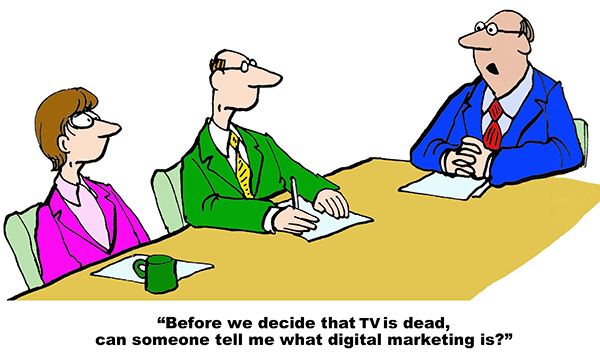29
May 2016
Traditional and Digital Marketing — the “Social” Divide
I had the pleasure of participating in a Blab chat (#socialchat) with top media influencers Andreea Cojocariu, Alan K’Nect and Michelle Stinson Ross. We discussed the “Marketing of Now: Traditional and Digital Marketing.”
Social has been around for the better part of 10 years now. But are we any closer to integrating traditional and digital marketing for seamless results?
In my opinion there still is a gap between traditional and digital marketing with one of the main reasons being financial. Social media offers widespread coverage for a relatively small amount of money. Old school media relied on inflated budgets. I remember paying around $2,000 for a quarter page ad in a publication. Analytics and Results were based on publication circulation. Yet, we never knew exactly who was looking, much less purchasing.
I believe digital marketing is “all over the map.” The lines are blurred in modern media services. Constant technology changes overwhelm brands. They have a hard time deciding what role the modern agency plays in their marketing decisions. For example, whom do your hire? An intern? An advertising agency? Influencers? Who can get us the best results on limited or challenging budgets?
So how do we bridge the “divide” between traditional marketing and digital? Here Andreea states in her blog:
“Given that society is more digital, as marketers, we NEED to adapt. We need to meet the needs of businesses that answer to consumers. Marketers, whether traditional or digital, need stop looking at marketing as one versus the other, but rather what is the best way to deliver the message.”
Let’s consider the following points:
- Dollars and Sense. Digital marketing is cheaper by far. Facebook can go as low as $0.10 per action depending on the demand for a brand category (i.e. B2C or B2B) as opposed to print and TV that can eat up a budget. You also can get more exposure and engagement from social advertising.
- Mobile spending is expected to be 65 billion dollars in 2019. Most users refer to mobile in their everyday life. Devices are now used to make shopping decisions. The downside is ad-blockers.
- Traditional Mail, Radio, and Digital TV. These mediums are now less crowded. They offer opportunities to get the message across. If the budget allows, I would not rule them out. Tie in your social channels to circle the wagons.
- New Media Marketing Methods. We must adapt to new methods of consuming information. Many new apps that deliver communications today resemble traditional media. They are viewed digitally. Flipboard is one example that comes to mind. This app actually seems to bridge the gap between traditional and digital media.
- Building connections. New media relies on online communities and networking groups to build a presence and to facilitate sales.
Why the Divide?
The lack of knowledge, lack of organization, or simple lack of communication make for this divide. Social marketing has become a broad term. It is not centralized. That is in good part why there is no synergy between the two. To fix this divide we need to review the marketing channels that we are going to specialize. For example, social advertising is advertising related. Social sales relate to the sales department. The challenge is to synchronize all disciplines so that we can get the most out of our campaigns.
Traditional Marketing Relied on Simple Projects.
First, there were focus groups to help the agency gather information. Then a creative strategy that was brand-centric was put in place. Ads were put in publications, on TV or radio. Analytic measurements were simple. It was all about circulation. A traditional advertising model relied on sales reports offered by the client. Rarely did they have first-hand access to the social media information we have today.
We need to adapt to today’s digital environment. We now have to focus on creating massive amounts of content for different interests. All this is geared to sustaining a dialog with potential customers. We also have to connect and sell on social channels, as well as run ads on programmatic platforms. Finally, we need to test and test again and analyze the results.
Conclusion
As digital agencies, we should offer a method to our strategy and design. In other words, offer a roadmap to integrate both disciplines. Clients need help to make educated choices. The digital agency’s job is to clarify what that “marketing formula” is. It should be clearly stated in a proposal overview.













Leave a reply translated